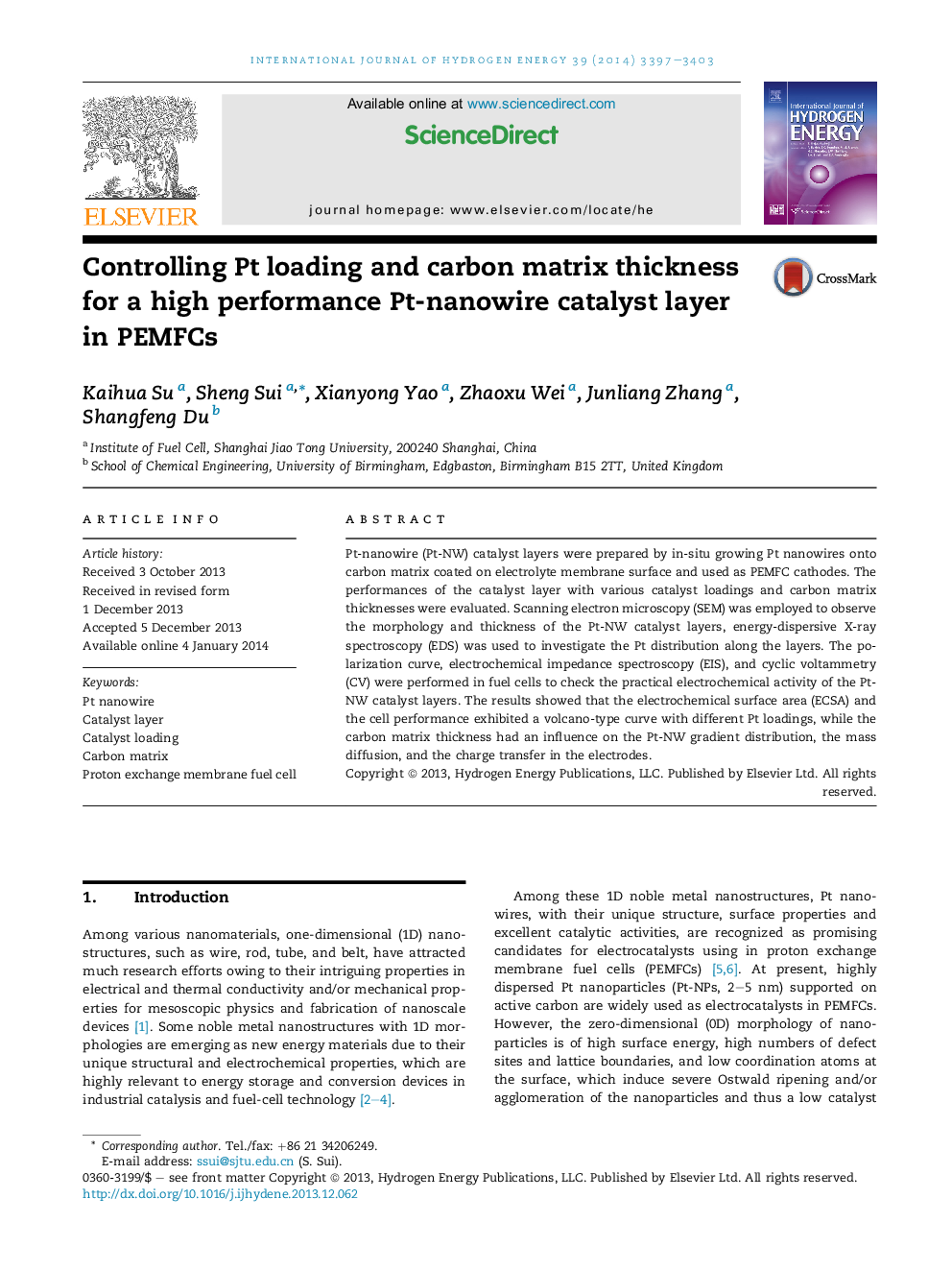| Article ID | Journal | Published Year | Pages | File Type |
|---|---|---|---|---|
| 1270644 | International Journal of Hydrogen Energy | 2014 | 7 Pages |
•An optimal Pt-NW catalyst layer was achieved.•The cell performance and the ECSA exhibited a volcano-type trend.•The matrix thickness had an influence on the Pt-NW gradient distribution.
Pt-nanowire (Pt-NW) catalyst layers were prepared by in-situ growing Pt nanowires onto carbon matrix coated on electrolyte membrane surface and used as PEMFC cathodes. The performances of the catalyst layer with various catalyst loadings and carbon matrix thicknesses were evaluated. Scanning electron microscopy (SEM) was employed to observe the morphology and thickness of the Pt-NW catalyst layers, energy-dispersive X-ray spectroscopy (EDS) was used to investigate the Pt distribution along the layers. The polarization curve, electrochemical impedance spectroscopy (EIS), and cyclic voltammetry (CV) were performed in fuel cells to check the practical electrochemical activity of the Pt-NW catalyst layers. The results showed that the electrochemical surface area (ECSA) and the cell performance exhibited a volcano-type curve with different Pt loadings, while the carbon matrix thickness had an influence on the Pt-NW gradient distribution, the mass diffusion, and the charge transfer in the electrodes.
